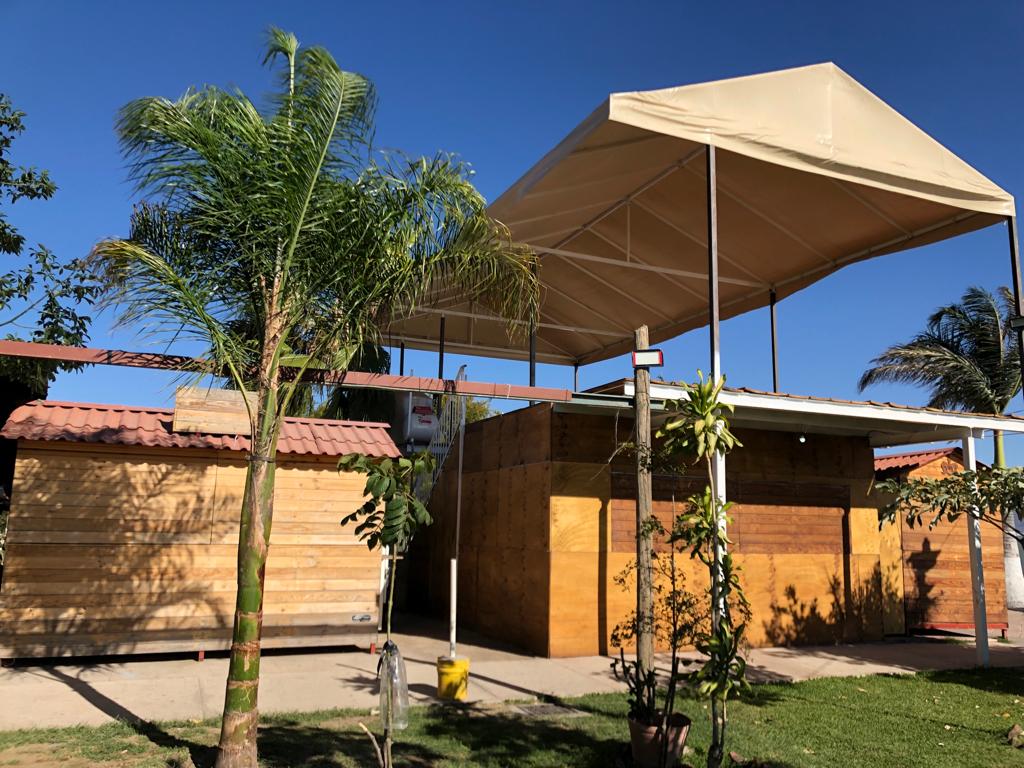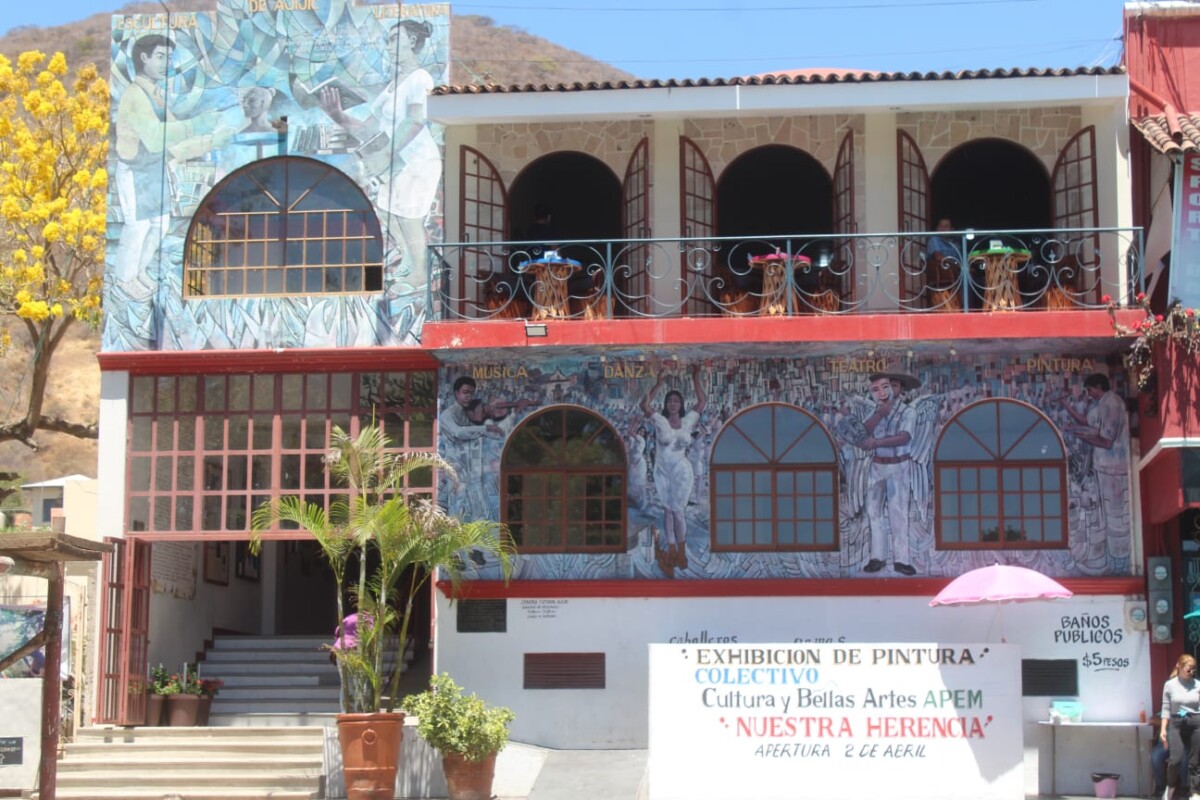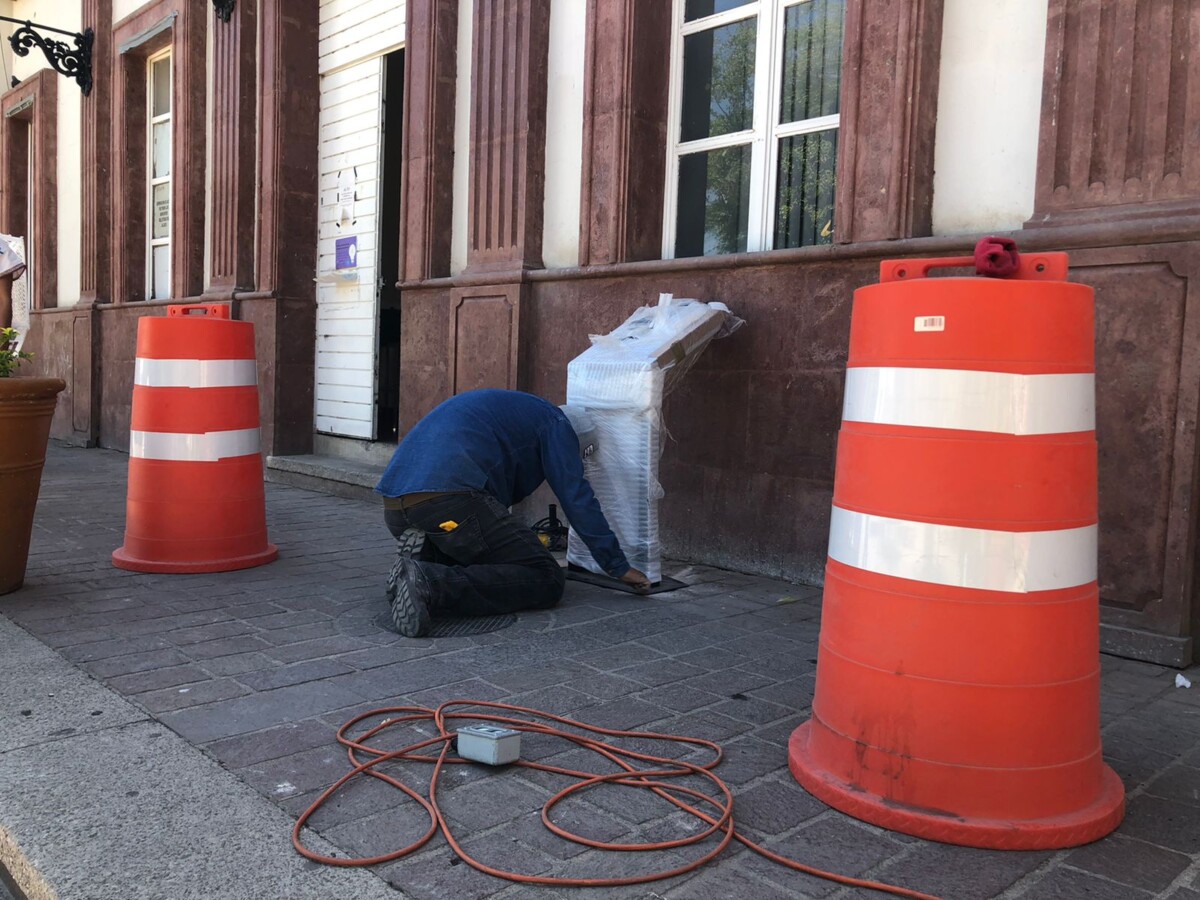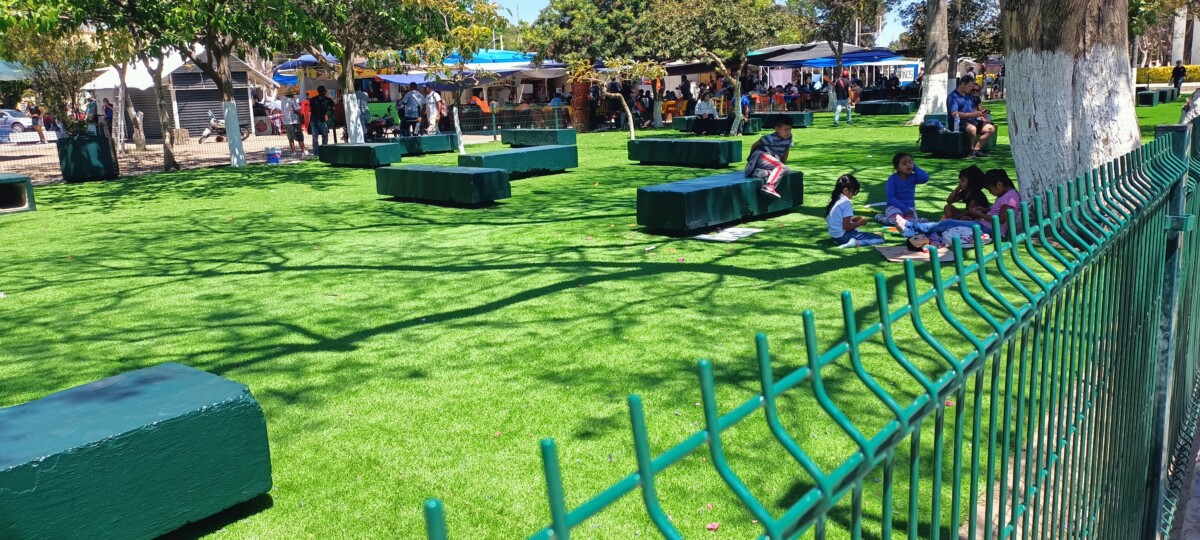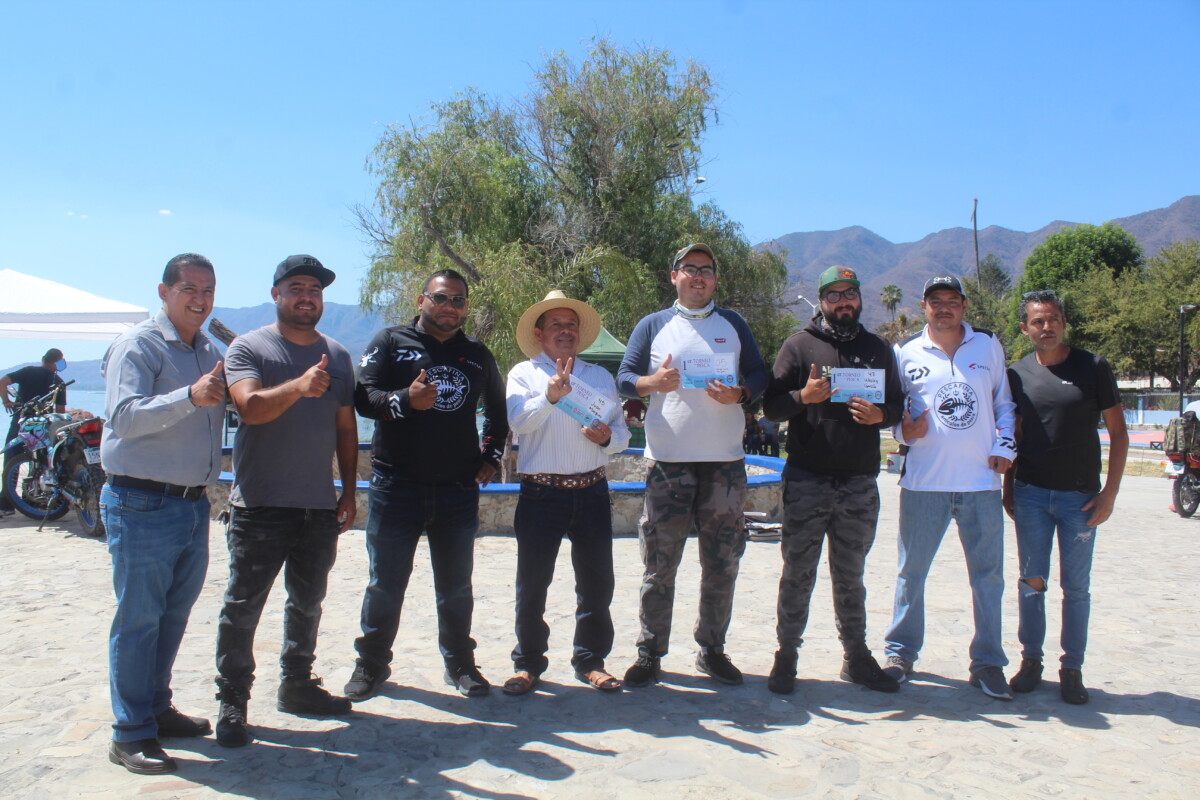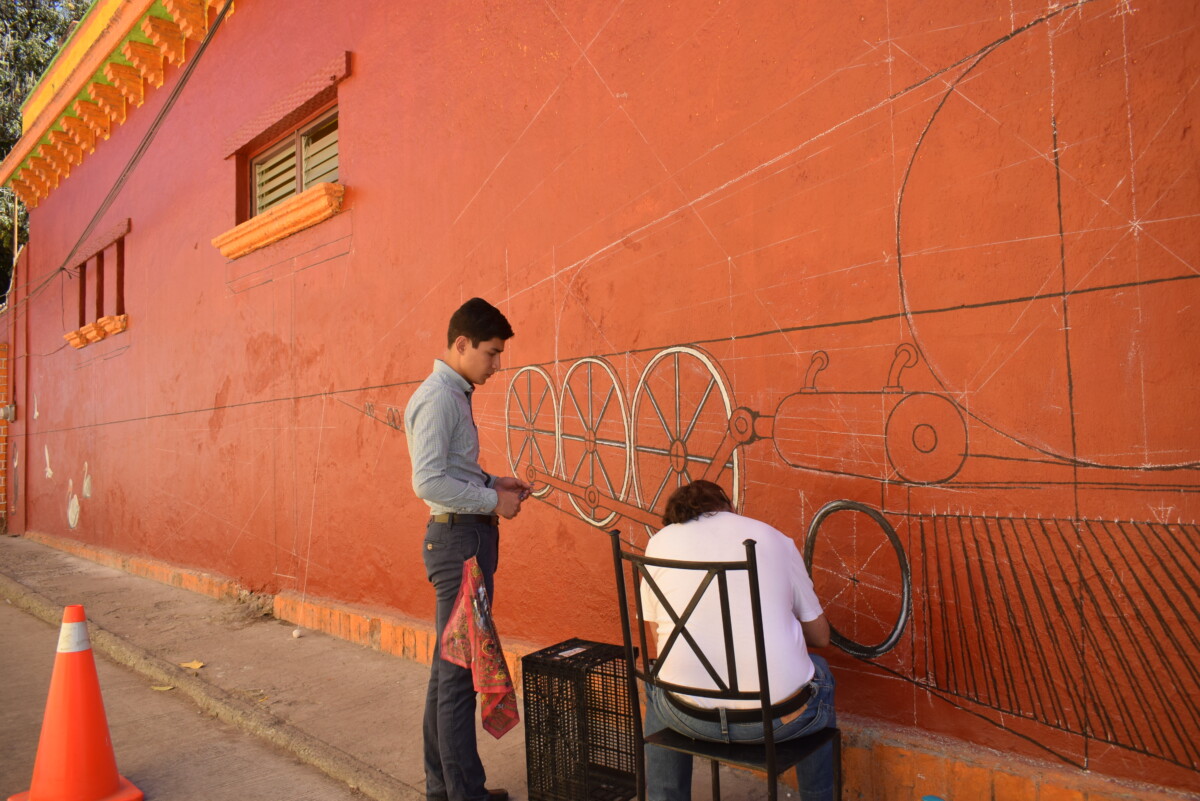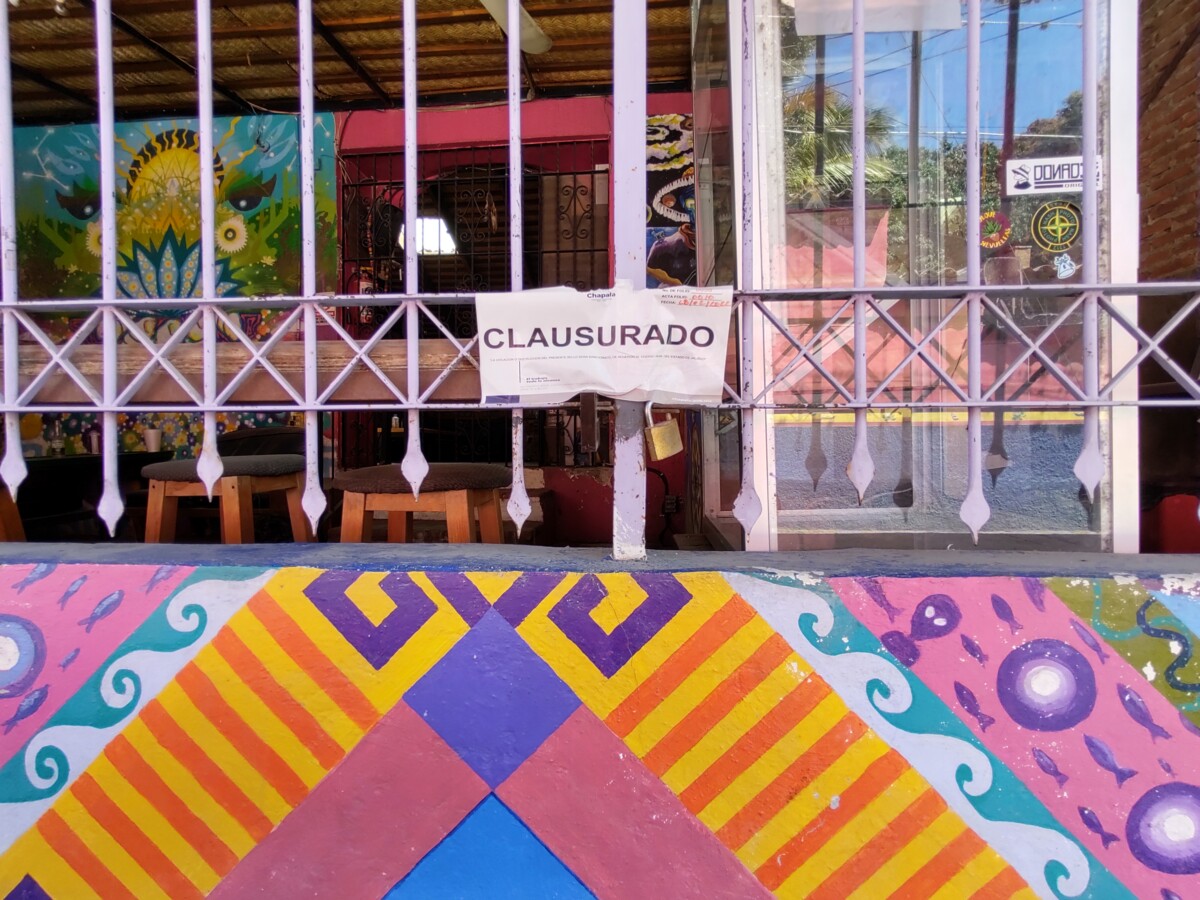Turismo
Construction of terraces on San Juan Cosalá boardwalk authorized
Two terraces have already been installed in the commercial area of San Juan Cosalá’s boardwalk.
Héctor Ruiz Mejía (Jocotepec).- The Government of Jocotepec authorized the installation of terraces in the commercial area of the boardwalk of the San Juan Cosalá delegation.
According to local vendors, the original project proposed by the city council included «traditional» tile terraces for each one of the stores in order to homogenize the image of the establishments; however, the vendors were opposed.
The structures would have had a cost of 80,000 pesos (approximately US$4,000 or CDN$5,000), but after the merchants refused to pay that amount, the government opted to allow them to build their own terrace. «After some meetings where we refused the original project, they allowed us to make our own terraces, the only condition was that whoever had the money should start,» explained one of the merchants consulted, who preferred to remain anonymous.
The merchants are optimistic about the arrival of Holy Week, and the flow of visitors and cash that it brings with it, to assist in financing the construction of the new premises. «We have been building since last year when we started, we have been going along as we go along, little by little, as we can, we have even gone into debt, borrowing, whatever we can get, but we want to open it for Easter,» said the anonymous merchant.
Although the merchant did not specify the cost of the work, he said that the wood and the metallic structure of the platform, which will be approximately six meters wide and eleven meters long, represented a major investment, but one they hope to recover since the platform will have a capacity of 15 tables for four merchants on the upper floor.
Semanario Laguna tried to confirm this information through Jocotepec’s social communication department; however, the agency did not comment on the matter.
Translated by MaryAnne Marble
New restaurant at the Ajijic Cultural Center
The tables of the new restaurant can already be seen at the Ajijic Cultural Center. Photo: Sofía Medeles.
Sofía Medeles(Ajijic).- A space on the second floor of the Centro Cultural de Ajijic (CCA), as well as a small part of the terrace in front of the venue, has been rented to install a restaurant.
The administrator of the CCA, Héctor Hinojosa, commented that these permits and the lease were granted by the Municipality of Chapala and that this area on the second floor has been suitable for a restaurant since the building was built, with a bar and a space for kitchen furniture.
«If anyone goes to a gallery, a cultural center or an art space in the city, there is always a space designated for a cafeteria or a soda fountain. When the cultural center was built they planned in the space for this. Anyone who has visited it can see that there was always a space for the kitchen and tables,» said Hinojosa.
The administrator added that they charge 3,500 pesos for the rental of the space and that, in addition, the owner pays for the space in front of the building to place tables, which she is willing to remove when there are events.
Since it started operating last weekend, the restaurant, called «4 Estaciones (4 Seasons),» caused controversy because there were opinions against it, both for the place where it is located and for the tables that were placed outside the CCA. This space has previously had a restaurant in service.
Finally, Héctor invited those who were not in agreement to visit the place to see the quality of the food and to reflect that it is an attraction for tourists to visit the Cultural Center.
Translated by Sandy Britton
Instalan señalética para orientar a visitantes del municipio
Personal del Ayuntamiento de Jocotepec, instalando los tótems a las afueras del Palacio Municipal. Foto: Cortesía.
Héctor Ruiz Mejía.- Más de 30 tótems con información turística, serán instalados en Jocotepec para facilitar la navegación de los visitantes en el municipio.
El director de Turismo y Fomento Artesanal, Víctor Manuel Loza Ornelas, informó que la población fue beneficiada a través de “Proyectos Productivos y Apoyos Extraordinarios” del Consejo Estatal de Promoción Económica (CEPE).
Con una inversión de 400 mil pesos, el municipio recibió aproximadamente 36 tótems con información turística que contendrán entre ocho y nueve tipos diferentes de señalética.
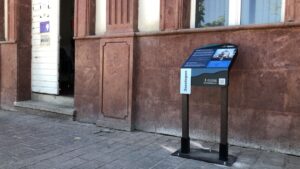
Así se verán los mapas informativos del proyecto turístico. Foto: Cortesía.
La importancia de este proyecto, aseguró personal de la dirección de Turismo, es mejorar la experiencia de los aproximadamente cinco mil turistas que visitan el municipio cada fin de semana.
La infraestructura turística contará con mapas informativos, señalamientos para carretera, flechas de navegación, fotos apostadas fuera de edificios y lugares emblemáticos; como la zona restaurantera de Piedra Barrenada, en el malecón, así como el en el mirador y el Hospitalito de San Juan Cosalá, entre otros.
El proyecto pretende facilitar la navegación de los visitantes para que puedan desplazarse fácilmente alrededor del municipio, así como garantizar su seguridad evitando que se pierdan o transiten zonas peligrosas.
La instalación de la señalética comenzó el pasado 30 de marzo en puntos como la plaza principal y los accesos a la cabecera municipal, concluyendo su instalación el fin de semana.
El director de Turismo explicó que la instalación de la señalética se retrasó dos meses debido a la disolución del CEPE, para la creación de la Agencia de Coinversión para el Desarrollo Sostenible de Jalisco; sin embargo, estará lista para recibir a los visitantes durante las vacaciones de Semana Santa y Pascua.
Comerciantes solicitan más ingresos en áreas verdes del malecón para el turismo y mejorar sus ventas
Así lucen los primeros 200 metros de áreas verdes rehabilitadas; hasta el momento sólo se ha terminado la primera fase del proyecto. Foto: Jazmín Stengel.
Jazmín Stengel.- Comerciantes del malecón de Chapala consideran que la rehabilitación de áreas verdes «se ve bonito»; sin embargo, han registrado bajas ventas debido a que, los turistas prefieren seguir de largo cuando se ven en la necesidad de rodear la cerca que circula éste espacio para ir al baño o comprar algún alimento.
Esto es debido a que la cerca de los 200 metros lineales de área verde, que se habilitaron frente al Jesús Pescador, a un lado del parque de patinetas en el malecón de Chapala, sólo cuenta con entradas desde el andador del malecón y el paso hacia los comercios se encuentra cerrado.
La zona circulada cuenta con dos entradas al sur, pasto sintético y bancas en forma “U” para disfrute de los visitantes.
Durante el recorrido de supervisión que hizo el presidente municipal, Alejandro de Jesús Aguirre Curiel, antes de finalizar la primera etapa de esta obra, el pasado 23 de marzo, indicó que la reja se instaló con el fin de evitar el hostigamiento de los vendedores ambulantes y meseros de la zona hacia los visitantes.
Sin embargo, los restauranteros y locatarios del lugar sugirieron al presidente ese día una entrada trasera para facilitar el paso a los turistas, aún que a los meseros y ambulantes no se les permitiría ofrecer su producto dentro de la zona cercada, situación que aún sucede.
A pesar de que la petición del ingreso extra fue hecha el mismo día del recorrido y encargada por parte del presidente al director de Obras Públicas, Juan Julio Novoa Sandoval, encargado directo de la obra, hasta el cierre de esta edición la primera fase concluyó sin modificaciones.
Esto provocó bajas en las ventas del malecón el último fin de semana. Y es que, aunque los meseros continúan ofreciendo sus productos, los turistas se van de largo al tener que rodear la malla, ya sea para sentarse en los equipales dispuestos para sus comensales o para ir al baño cuando se encuentran dentro del área verde.
Son pocos, y en su mayoría meseros por comisión o freelance, los que hasta el momento se quejaron sobre el recorte de mesas que provocó este cambio de imagen. De tener hasta ocho mesas cada establecimiento, ahora solo se les permite instalar cuatro.
Sin embargo, los comerciantes se han visto más afectados por la falta de acceso entre el andador del malecón, el área verde y la zona comercial.
«Si hubiera entrado por atrás, no molestaría tanto», comentó una locataria refiriéndose a los argumentos de los quejosos. «La gente viene a comprar, pero al tener que rodear por segunda vez prefieren seguir su camino», agregó la encargada del local vecino quien también es restaurantera.
Por su parte, los visitantes consultados dijeron sentirse más tranquilos para convivir o ingerir sus alimentos y bebidas, aunque los músicos continúan ofreciendo sus servicios a pesar de la cerca. «Me siento un rarito, al menos hasta que me dan ganas de ir al baño», comentó una mujer de edad mayor que disfrutaba de la recién rehabilitada área verde.
Por último, Laguna observó durante más de media hora como la gente hacía uso de esta zona, ya sea con o sin alimento, con o sin consumir de los comercios. Pero en varias ocasiones, los turistas de paso preferían seguir su camino hasta el área de la rampa antes de rodear el sitio cercado.
Esta es la primera de cuatro etapas de intervención en el malecón, anunciadas por el presidente de Chapala, Alejandro Aguirre Curiel.
San Antonio Tlayacapan’s first fishing tournament tracts 60 anglers and an enthusiastic audience
In the center, the three winners of the tournament. From left to right: Juan Márquez, first place, José Luis Reyes, second place and Wesley García, third place. Photo: Sofía Medeles.
Sofía Medeles (Ajjic).- Sixty fishermen competed in the first fishing tournament in San Antonio Tlayacapan in front of dozens of spectators on March 20.
The event began around eight o’clock in the morning, as the competitors lined the shores of the boardwalk, casting their lines until two o’clock in the afternoon when the awards ceremony was held. The tournament was multi-species; all fish caught were counted in the sum of the total length of all fish landed.
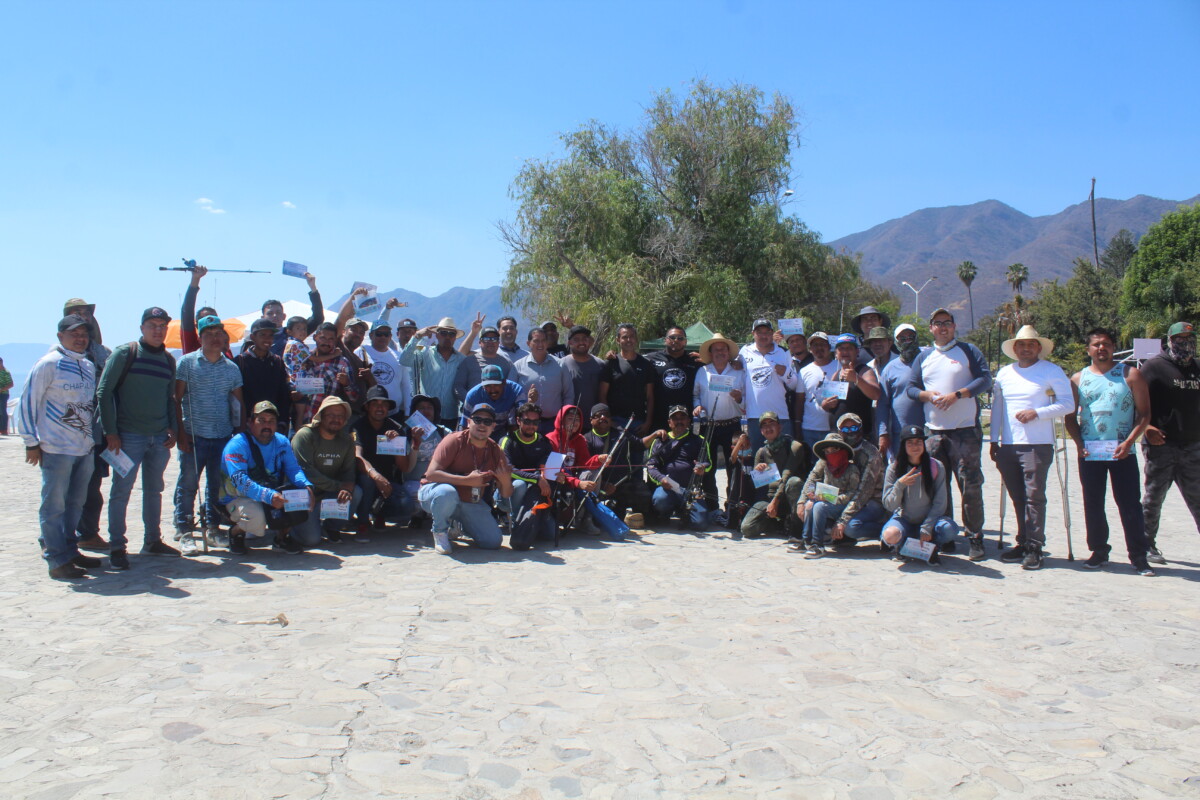
Participants and organizers of the first fishing tournament in San Antonio Tlayacapan. Photo: Sofía Medeles.
First place went to Juan Márquez, who was the only one who met the quota of five fish and received 2,400 pesos. José Luis Reyes came in second place with a prize of 1,800 pesos; while third place went to Wesley García, who also won the category of the shortest fish, or «la cortona», and received fishing equipment and a fishing rod. Román Becerra won the ward for the the longest fish, or «largona».
The tournament was organized by the delegation of San Antonio, and the Municipal Sports Council (COMUDE), in coordination with Pescafina GDL (establishment selling fishing tackle) and Chapalico Bass.
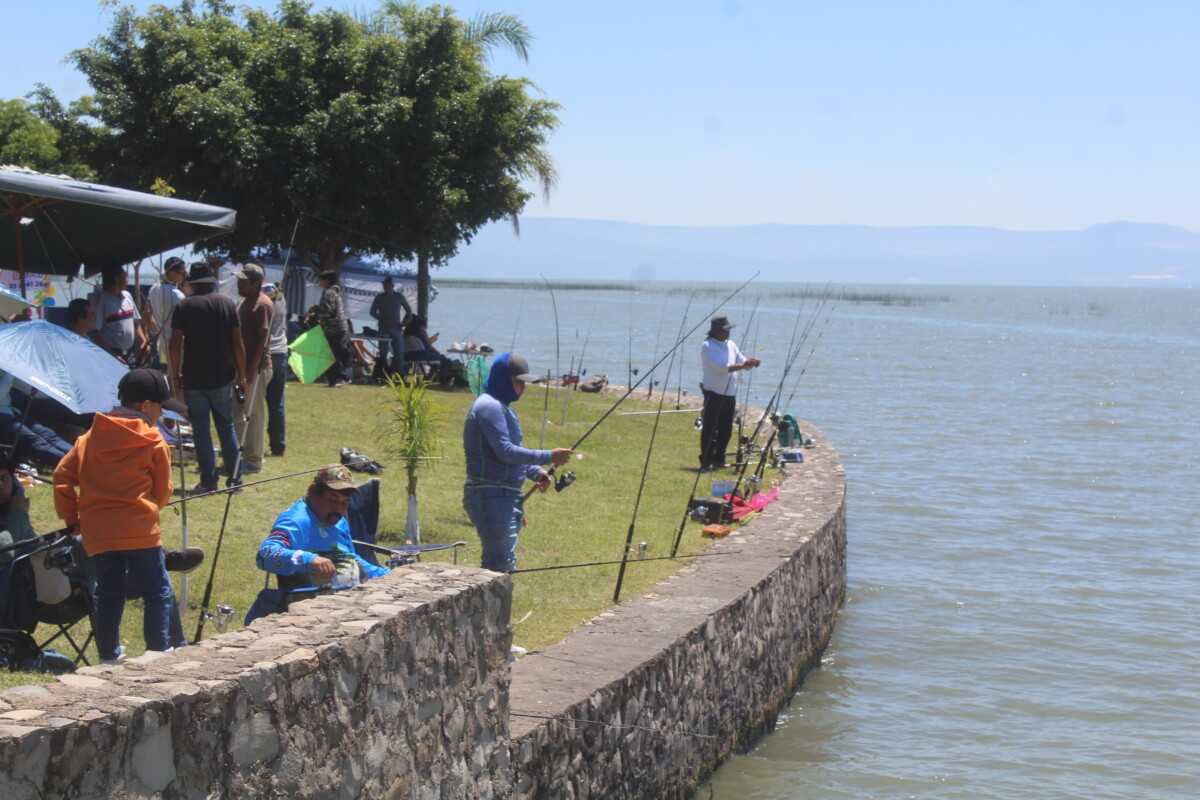
Participants lined the shore of the malecon from eight in the morning until two in the afternoon. Photo: Sofía Medeles.
«It was a quiet tournament, the fishing was a little slow, but it was a pleasant and entertaining experience for the participants, and the people supporting them,» added Miguel, a participant from San Juan Tecomatlán.
Oscar Paredes, from Pescafina GDL, said that this is the first tournament of many that will be held in the town. He also added that, in the next tournaments, he will improve the approach and planning in the lake, so that the fishing takes place without incidents and obstacles such as trammel nets will be removed.
Finally, he thanked the municipal police, civil protection, and authorities who helped organize the event, for maintaining order and safety for participants and attendees.
Translated by Patrick O’Heffernan
Blooming trees bring nature’s color to the Magic Town of Ajijic
In Castillo de La Floresta, jacarandas abound. Photo: Sofía Medeles.
Sofía Medeles (Ajijic).- Ajijic has earned the designation of Magic Town, not only for its traditions, but also for the beauty of its streets and the diversity of nature. Proof of this are its spring landscapes with the large number of colorful flowering trees.

Purple rose or guayacan tree on Rio Yaqui street, at the intersection with Rio Bravo. Photo: Sofía Medeles.
La Floresta, in the east of the delegation, is one of the areas bursting with flowering trees.. It is enough to walk a few steps inside the subdivision to find several jacarandas – Jacaranda mimosifolia – that turn the planters purple. The so-called «Castle of La Floresta» has one of the highest concentration of these trees in Ajiic.
In the streets of the central part of Ajijic, what is most abundant are the spring trees – Tabebuia donnel-smithii – in yellow color, standing out among the older houses. «They must be at least 50 years old, even older,» commented some of the older adults interviewed.

The yellow of spring tinges the cobblestones of Independencia Street. Photo: Sofia Medeles.
In some streets, pink also stands out due to the purple rose tree -guayacán or Tabebuia rosea-, as well as the bougainvillea. Although the bougainvillea bloom most of the year, they are most intense in spring.
Likewise, on Ajijic’s boardwalk, on the west side, there are several trees in shades ranging from yellow to pink and purple, which are the most admired by visitors.

Leafy jacaranda trees on Hidalgo Street, in the area known as Las Seis Esquinas. Photo: Sofia Medeles.
Walking through Ajijic Magic Town during the spring, one is immersed in a colorful atmosphere that comes from its facades as well as from trees and flowers that decorate its narrow cobblestone streets.

Pink bougainvilleas north of Ajijic, on Calle Galeana. Photo: Sofia Medeles.

Trees with different colored flowers can be seen on the Ajijic boardwalk, in the area of the International Garden. Photo: Sofía Medeles.
Translated by Elisabeth Shields
2022 Verbena Jamaica del Pasado supports families in Ajijic on Sunday April 10
Verbena Jamaica del Pasado 2019. Photo: Luilli Baron.
Sofía Medeles (Ajijic).– The Verbena Jamaica del Pasado will be held Sunday, April 10th, after two years of cancellations. When it returns, it will have some modifications; the main one will be that it will focus on supporting the families of sick people of Ajijic, giving the event a “church fair” feel.
The General Director of the Passion of The Christ Church, Eduardo «Lalo» Ramos Cordero, and the Treasurer, Ricardo Mora, noted that there are 17 families who will be selling different types of food throughout the day. The event starts at approximately 8am and runs until 10pm. At the event, there will be donation boxes; contributions will be distributed in equal parts to the sick.
In addition, the organizers assured that they will be bringing back another tradition, Light of the Past, turning off the lights, for about half an hour, starting at 9pm. The municipal government of Chapala will provide infrastructure for the event. The decoration in the stands will be the same as always, ‘papel picado’ or traditional cutout paper, and reeds. Around the square, visitors will see paper lanterns and bows with papel picado.
Local bands such as La Incomparable, Estrellas del Lago, La Misma Banda and Orquesta Típica de Chapala will provide free entertainment throughout the event. Event Organizers are looking for more groups or dancers to provide entertainment in the morning portion of the event.
Ramos expressed gratitude that he and the whole team have towards for everyone in Chapala, since they have always shown unity and support in these matters, as well as to the municipal authorities, including Municipal Trustee, Gamaliel Soto Perez, and his brother Carlos, Ajijic Delegado-Elect Maximiano Macias Arceo, and Councilwoman Denisse Michelle Ibarra, for their support
Translated by Amy Esperanto
New mural started in Chapala
The mural is supervised by Juan José Becerra Hernández
Jazmín Stengel (Chapala).- The new mural, which is still untitled, will extend along Niños Héroes street for 148 linear meters (about 485 feet), starting at the intersection with Francisco I. Madero avenue. It is supervised by muralist Juan José Becerra Hernández, author of ‘Prodigio del Agave.’
The objective of the painting is to «freeze in time» the way of life around Lake Chapala between 1900 and 1920. It includes representative scenes such as the train and the train station, now known as the González Gallo Cultural Center, fishing, as well as the hills of Ocotlán and the steamboats that used to transport food from one end of the lake to the other.
“The goal will be to create a landscape that describes Lake Chapala,” said the author of the work. However, the magic of «Juanjo,» as is his nickname, consists of a technique that makes you feel inside the painting. Ten students have participated in the process so far, of which seven still continue.
Translated by Sydney Metrick
Three bars have been sanctioned in Ajijic for excess noise
The bar «La Mezcalería» was recently closed after complaints from neighbors in the area for excessive noise. Photo: Sofía Medeles.
Sofía Medeles (Ajijic).- Three bars in Ajijic have been closed down by the Chapala’s Regulations, Inspection and Surveillance Department since the beginning of the current administration because of complaints from neighbors for excessive noise and exceeding their permitted hours.
The three are La Mezcalería, La Tía and La Parranda Bar (the latter two were closed months ago), all located in the center of the town, because they stayed open past mandated closing time and exceeded legal noise levels, according to Acting Delegado Maximiliano Macías Arceo.
He explained that the managers of the establishments that were closed were warned about the complaints of the neighbors; however, they ignored them.
«The closed businesses had already been previously warned about the rules they were breaking, especially the hours of operation. We know that young people have their recreational places but in some situations the owners think that there will be no repercussions; but they can’t be violating everything and get away with it,» commented Macías Arceo.
Inspectors from the Regulations Department monitor the areas with these types of businesses during the weekends at night, making sure that they comply with the closing hours, as well as that the sound volume is within the allowed decibels, which is measured with a sound level meter donated to the municipality.
The closures have caused a stir among the inhabitants of Ajijic, who, both in social networks and in interviews conducted by this newspaper, have shown conflicting positions on whether it is right or wrong to resort to this type of sanctions.
«Most of those who complain are Americans, they are not from here and very few attend these places. Now, if they want to start with closures, let them be even, and also do it to event halls, events in the lienzo, and even in the plaza, which have music at full volume, sometimes all night long, and nobody calls their attention, nor regulates them», shared Laura, a local resident.
In contrast, there are those who side with the authority, saying that if they set an example with the businesses that evade the norms, the others will automatically align themselves with what is indicated by Padrón y Licencias. «There is no way that they will continue with their violations if they have already seen that others have been shut down for the same thing,» said another interviewee.
Maximiliano Macías added that the owners of these businesses, upon applying for and paying for the licenses, are given the hours and rules of operation of their businesses, so they cannot plead ignorance. He also suggested that the managers take measures to ensure that their customers leave when closing time is approaching.
According to Macías Arceo, the hours allowed for this type of establishments are a 12:00 a.m. closing from Monday to Thursday and Sundays, and on Fridays and Saturdays closing time is 2:00 a.m.
On the other hand, live music is allowed until midnight any day of the week, but with a maximum of 55 decibels, established in accordance with the Anti-noise Law of the state of Jalisco.
Of the three closed establishments, La Tía and Parranda Bar have already reopened their doors, while El Camaleón bar has been the subject of complaints by neighbors, it has not been closed.
Translated by Patrick O’Heffernan
Entrega Gobernador de Jalisco ciclovía y supervisa obras durante su visita a Chapala
Alejandro de Jesús Aguirre Curiel junto al gobernador Enrique Alfaro durante la entrega de los 16 kilómetros terminados de la ciclopista Chapala – Jocotepec. Foto: Jazmín Stengel.
Jazmín Stengel.- Cuatro obras, entre supervisión y entregas son las que presentó el Gobernador de Jalisco, Enrique Alfaro Ramírez, durante su gira por Chapala, acontecida el viernes 25 de marzo.
El proyecto de la ciclovía de Chapala que abarca 16 kilómetros fue entregado de manera oficial el mismo día, frente al parque La Milagrosa. La obra inició durante la administración pasada 2018-2021, el presupuesto total, hasta Jocotepec fue de 211 millones de pesos, aseguró el gobernador.

Enrique Alfaro y el presidente municipal de Chapala, Alejandro de Jesús Aguirre Curiel, durante la supervisión de obra en la Telesecundaria Guadalupe Victoria en Santa Cruz de la Soledad, un alumno leyó un agradecimiento al respecto. Foto: Jazmín Stengel.
Enrique Alfaro y el presidente municipal de Chapala, Alejandro de Jesús Aguirre Curiel, durante la supervisión de obra en la Telesecundaria Guadalupe Victoria en Santa Cruz de la Soledad, un alumno leyó un agradecimiento al respecto.
También se realizó la grabación de un video para presentar el proyecto de imagen urbana en la entrada de Chapala, es decir, la obra de rehabilitación planeada para la avenida Francisco I. Madero en la cabecera municipal, cuya inversión consta de 17.5 millones de pesos para la primera etapa y aproximadamente 80 millones más en la segunda. Se estima que la obra tardará dos años en terminarse.
Los dos proyectos supervisados son la extensión de la Telesecundaria Guadalupe Victoria en Santa Cruz de la Soledad con un presupuesto de 12.9 mdp y un nuevo módulo en el Instituto Tecnológico de Chapala, Mario Molina con una inversión ya asignada de 25 millones más 15 millones que el gobernador anunció durante la gira.
La primera etapa de la ciclopista que constó de 8 kilómetros desde Chapala hasta Ajijic fue entregada por el Gobernador en el mes de agosto del 2020 a la administración 2018-2021.
Busca la nota completa en nuestra siguiente edición impresa.
© 2016. Todos los derechos reservados. Semanario de la Ribera de Chapala
